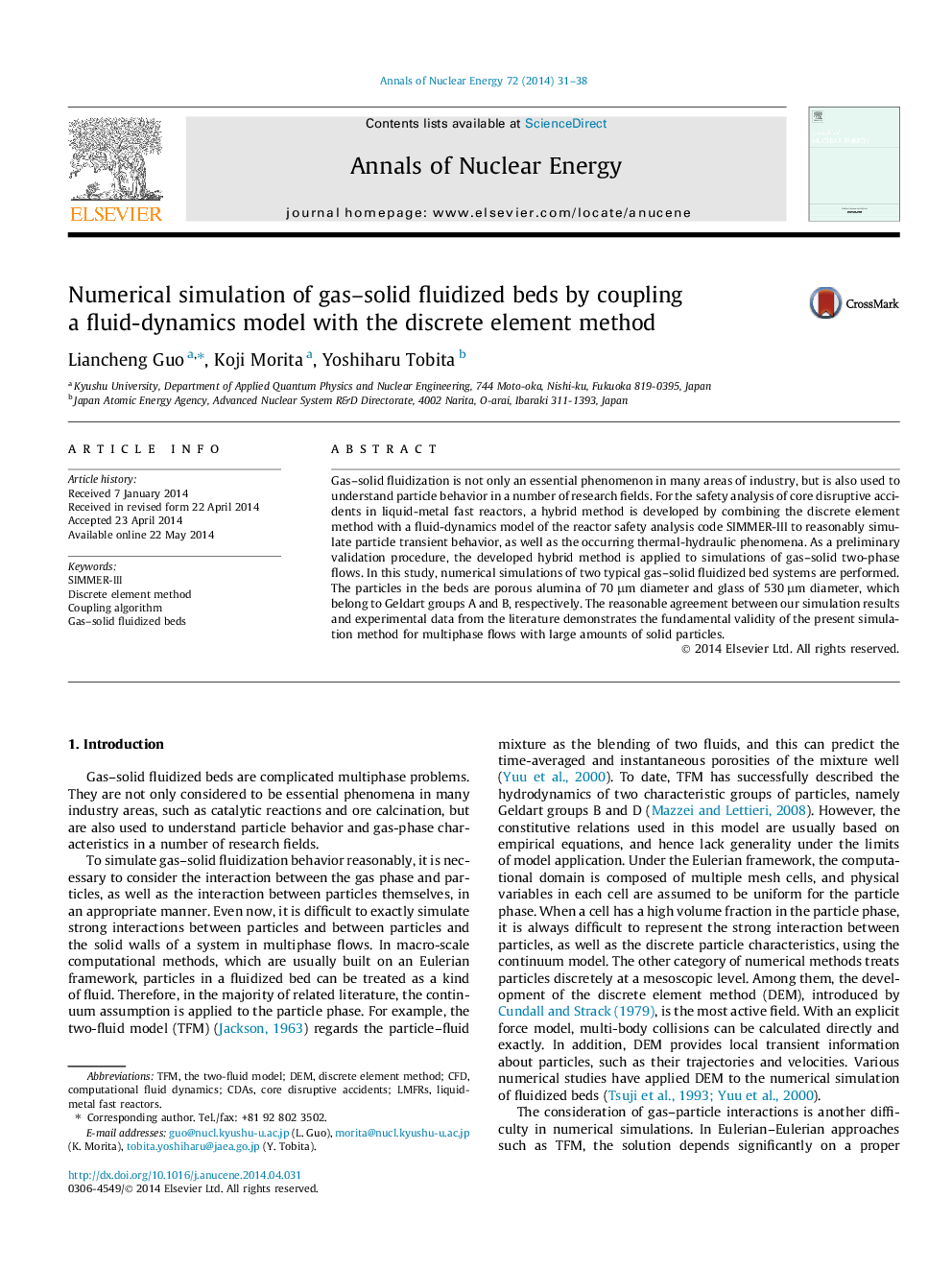| Article ID | Journal | Published Year | Pages | File Type |
|---|---|---|---|---|
| 1728113 | Annals of Nuclear Energy | 2014 | 8 Pages |
•A coupling algorithm was developed by combining DEM with a multi-fluid model.•This method was validated by perform the simulations of gas–solid fluidized beds.•Agreement was obtained between the simulation results and experimental data.
Gas–solid fluidization is not only an essential phenomenon in many areas of industry, but is also used to understand particle behavior in a number of research fields. For the safety analysis of core disruptive accidents in liquid-metal fast reactors, a hybrid method is developed by combining the discrete element method with a fluid-dynamics model of the reactor safety analysis code SIMMER-III to reasonably simulate particle transient behavior, as well as the occurring thermal-hydraulic phenomena. As a preliminary validation procedure, the developed hybrid method is applied to simulations of gas–solid two-phase flows. In this study, numerical simulations of two typical gas–solid fluidized bed systems are performed. The particles in the beds are porous alumina of 70 μm diameter and glass of 530 μm diameter, which belong to Geldart groups A and B, respectively. The reasonable agreement between our simulation results and experimental data from the literature demonstrates the fundamental validity of the present simulation method for multiphase flows with large amounts of solid particles.
